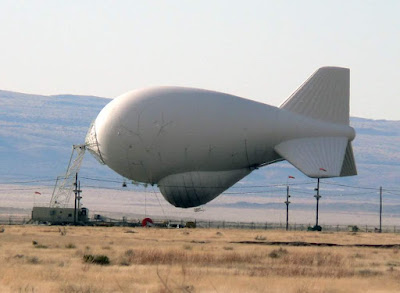The Philippine Navy received its first Tethered Aerostat Radar System (TARS), which is among the military assistance promised by former Pres. Obama in 2015 under the US government's Southeast Asia Maritime Security Initiative.
The system uses the TCOM 28M Operational Class Aerostat System, which is a medium-sized aerostat made by American company TCOM L.P. which specializes in aerostat used for surveillance.
The system has a medium-range detection and monitoring capability that can detect maritime and air traffic operating below its domain. This is very much similar but a little simpler to the Tethered Aerostat Radar Systems used by the US Department of Homeland Security
It is equipped with a downward looking radar that can detect sea surface, ground, amd low level aerial activities. Based on publicly available information, the aerostat's radar system can detect up to 90 miles at maximum operating height from its deployment area.
 |
| The TARS can be equipped with a variety of surveillance equipment including radar, EO/IR system, laser designator, and others. Photo screen-grabbed from TCOM's Youtube video. |
Problem with this is its dependent on weather to be deployed, as bad weather may affect its detection system, and may also damage or cut the tethering of the aerostat from the ground. But if this system works well, MaxDefense expects the PN to order more since one isn't enough considering the vast maritime donain of the country.
Thanks to one of our anonymous source for the photos.
MaxDefense discussed the Southeast Asia Maritime Security Initiative in its FB posts on April 2016. For more details you may check this link:
"The Philippines at Forefront of New Pentagon Maritime Security Inititative"
All future updates and additional discussions on the Philippine Navy's Tethered Aerostat Radar System will be discussed in this blog entry.















southern Palawan and southen Mindanao are rarely hit by typhoon so this is most suitable for these areas..
ReplyDeleteSir max question. Is this part in the modernization program, if so hiw many is needed and how will this radar fit with existing once? As a backup, support or main platform?
ReplyDeleteI can confirm this during a recent trip somewhere. I saw this in person, and I hope we get more of this. I can also confirm that where it is currently based, it will be safe from adverse weather.
ReplyDeleteWhile the TARS was transferred to PN under the SEA-MSI, this asset was in fact given to us by US officially as part of its WMD-Proliferation Prevention Program for NCWSystem to upgrade the Maritime Domain Awareness of the country.
ReplyDelete